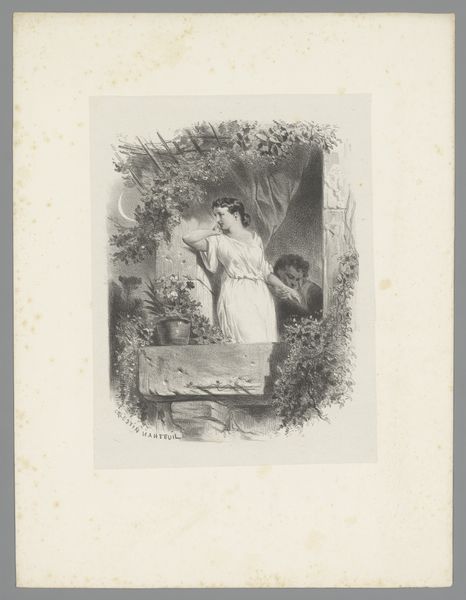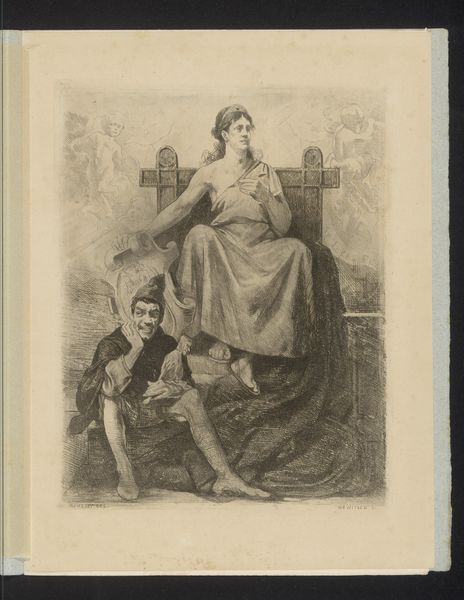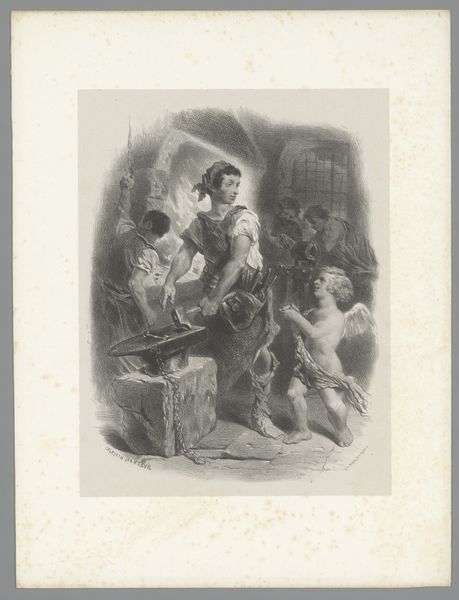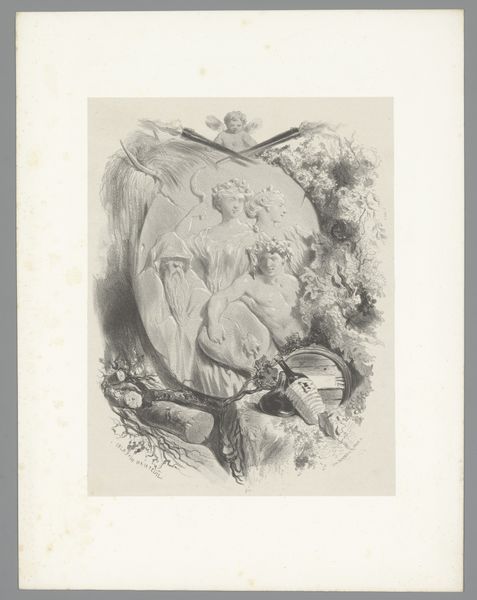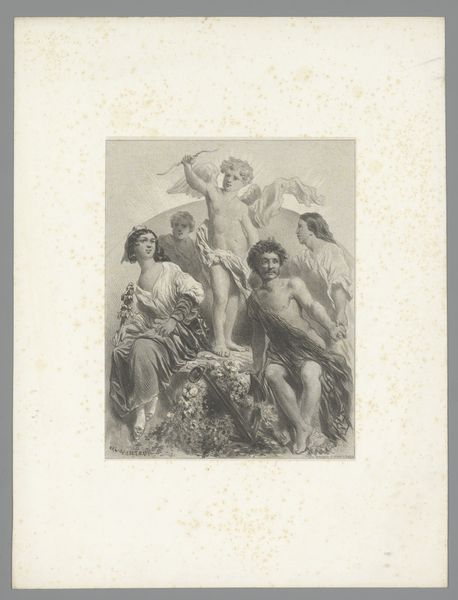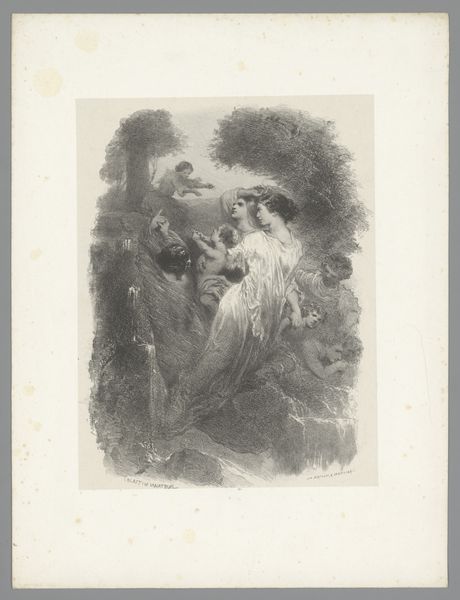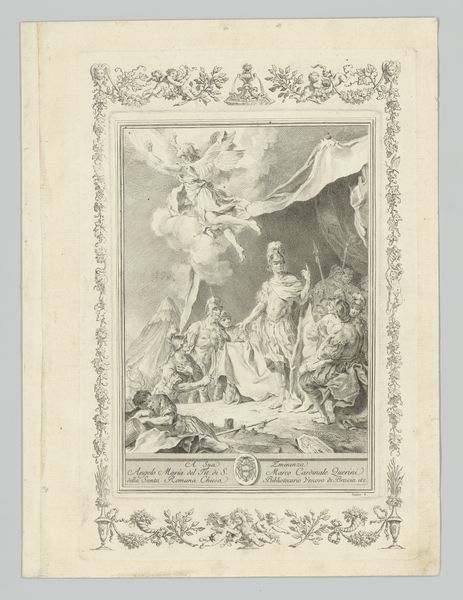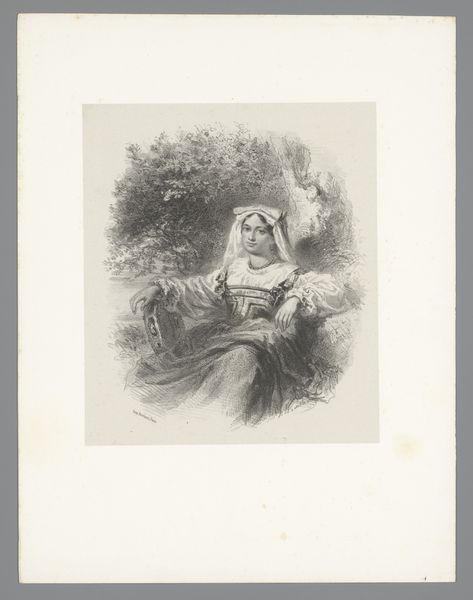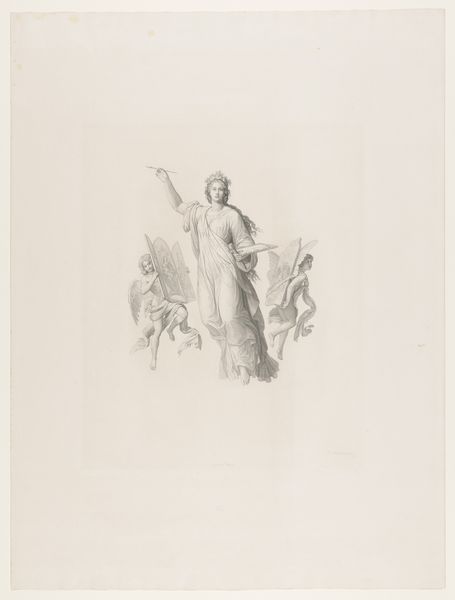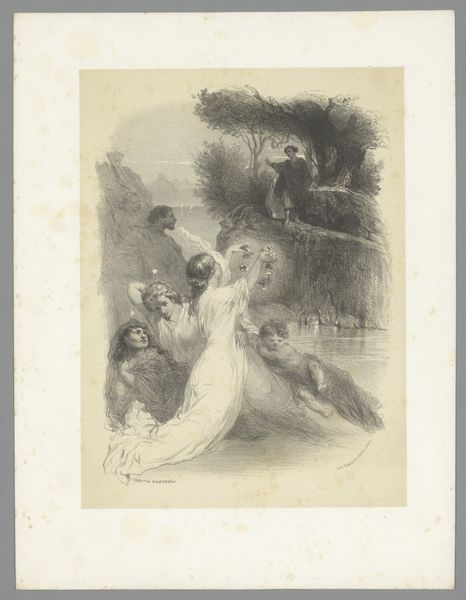
Dimensions: height 354 mm, width 274 mm
Copyright: Rijks Museum: Open Domain
Curator: Welcome! Today we’re looking at an engraving by Célestin Nanteuil, dating from sometime between 1851 and 1865. The title is "Borstbeeld omringd door Bacchus, twee vrouwen en andere figuren", or "Bust Surrounded by Bacchus, Two Women, and Other Figures." Editor: My initial impression is that of a dreamlike scene. The composition, a swirling mix of figures surrounding a classical bust, gives off a slightly chaotic but beautiful air, something from a Bacchanalian revelry perhaps? Curator: Absolutely. Nanteuil was working within the Romantic tradition, and that's clear in the idealized, almost theatrical depiction. You have this central bust radiating light, suggesting an almost divine presence, amidst a genre-painting atmosphere. What seems to be depicted is a confluence of the classical with contemporary life. The open book hints to artistic interpretation while Bacchus imbibes, seemingly detached. Editor: I'm fascinated by the detail achieved through the engraving technique. The way the light plays across the bust and the fabrics is remarkably subtle, creating a depth that belies its monochrome palette. There's an almost sculptural quality. Notice also how strategically floral designs are distributed within the visual elements; these carefully positioned flower formations highlight significant moments, particularly those involving individuals looking in distinct directions. Curator: And that relates, I think, to the art world in France at the time. Prints like this one democratized access to art, bringing images of idealized beauty, often linked to powerful patrons, into middle-class homes. They fueled cultural aspirations and reflected changing social structures by creating affordable yet culturally important imagery. The rise of Romanticism goes hand in hand with these trends as artists like Nanteuil reimagined art for a different type of consumer and admirer. Editor: It certainly challenges any singular reading. The somewhat bizarre juxtaposition of characters forces one to speculate at this allegory's purpose, especially given its era. One's eye dances among these images wondering at their connection! Curator: It's a captivating example of its time—the mid-19th century grappling with its classical inheritance and the implications of democratizing art. Editor: Indeed, it's the tension between the classical form and romantic excess that makes this piece so compelling visually.
Comments
No comments
Be the first to comment and join the conversation on the ultimate creative platform.


